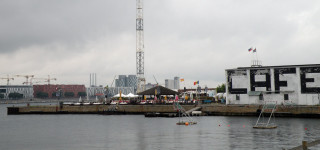Site-specific Innovation

Currently, cities across the Northern European region are actively redeveloping their former industrial harbours. Indeed, harbours areas are essential in the long-term transition from industrial to information and experience societies; harbours are becoming sites for new businesses and residences, but also places for emerging lifestyles and cultural processes. In this transformation process, harbours provide arenas for a new urban dynamics, involving multiple sectors and functions in society, as opposed to the monoculturalism prevailing in the ages of the industrial city. To us, the critical question is how innovation may contribute to urban life and site-specific qualities
The transformation of former harbour districts involves challenges but also potentials when it comes to addressing issues such as changing demographics (growing population in major cities in the region), climate change-induced sea level rise and precipitation patterns, and the need to transform the infrastructures, buildings and landscapes with the aim of limiting energy consumption and climate gas emissions. All of these challenged should be examined with due regard to equitable social development, and take into account obstructing infrastructures, local climates, co-existence with remaining industrial harbour activities, etc.
Quite often, however, harbour transformation tends to follow existing spatial models and examples that are imported from somewhere else. Given the widespread phenomenon of harbour transformation in the North European region, it is of primary importance to develop an understanding of the relationship between general tendencies and local solutions and designs. Involving researchers, practitioners and businesses from a variety of fields may help us move beyond the simple application of generic solutions and, instead, promote a sustained innovation based on a synergy of research, urban policy and planning practices, as well as real estate development. By seeking innovation across sectors, research enables public sector actors and businesses to increase value creation in urban harbour development processes by means of new planning and design methods that respond to local conditions.
It is essential to learn from previous harbor transformations: What happened to the many good intentions, and how may similar intentions (promoting site-specificity) be addressed in present-day approaches? The actual circulation of inspiration from one project to many others is just another good reason for studying harbour transformation as part of innovation as an urban process across societal sectors, private and public.
Harbour transformations since the 1980s provide rich illustrations of such processes and should be examined at close hand in order to refine the initiatives to be taken in present and future processes. This is why selected processes from the past two or three decades have to be studied in light of contemporary challenges. To which extent and in which ways has the desire for site-specificity actually been pursued or even translated into reality? In this context, the promotion of a particular “harbour dwelling” since the early 2000s may be examined as a possible shift in the perception of city living. Did this policy engender new urban cultures instead of suburban ones? Further, the role of cultural processes and cultural institutions in the development of harbour districts should be mapped and assessed.
We propose that new knowledge of approaches favouring site-specific development of harbour areas be developed. This includes questions of how site-specific solutions emerge, and may be adapted to the specific conditions of a particular urban development area. This goal can be achieved by means of collaboration between researchers and planning authorities in harbour cities. As many Northern European and Scandianvian cities currently face intense redevelopment of harbour areas, specific on-going or recently initiated harbour planning processes may provide working ‘laboratories’ for knowledge development. We suggest that this research takes place in a network uniting cities, planning experts and academic scholars across professional, national and regional borders. In this way, it will be possible to actively transfer knowledge, models and visions between cities which, in the end, have quite a few things in common.
By: Henrik Reeh (Department of Arts and Cultural Studies, University of Copenhagen) and Peter Hemmersam (Institute of Urbanism and Landscape, The Oslo School of Architecture and Design).



